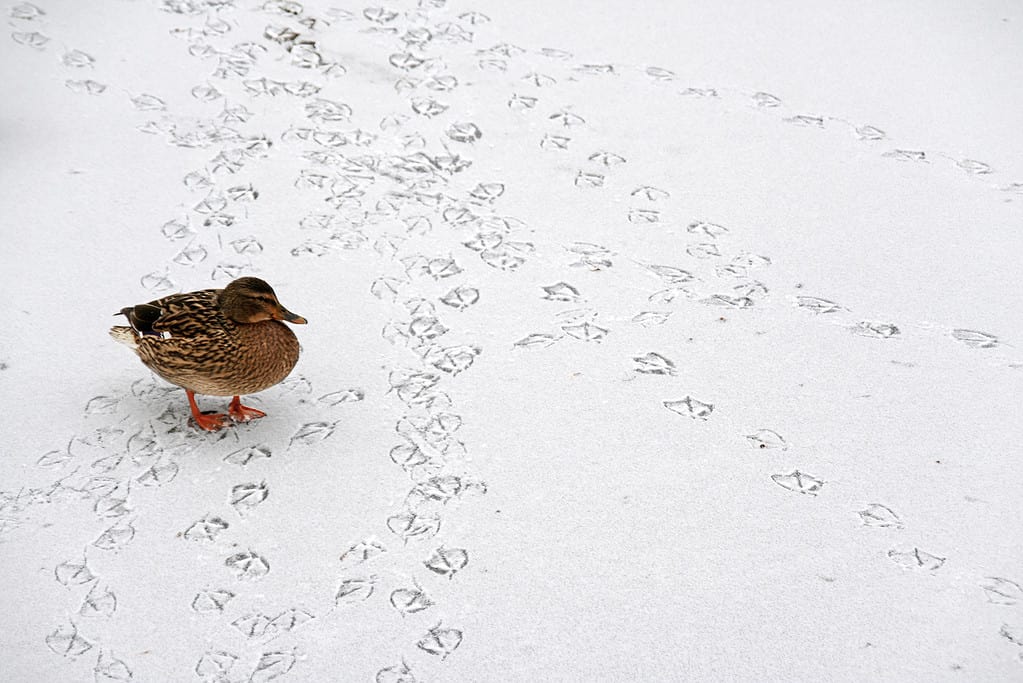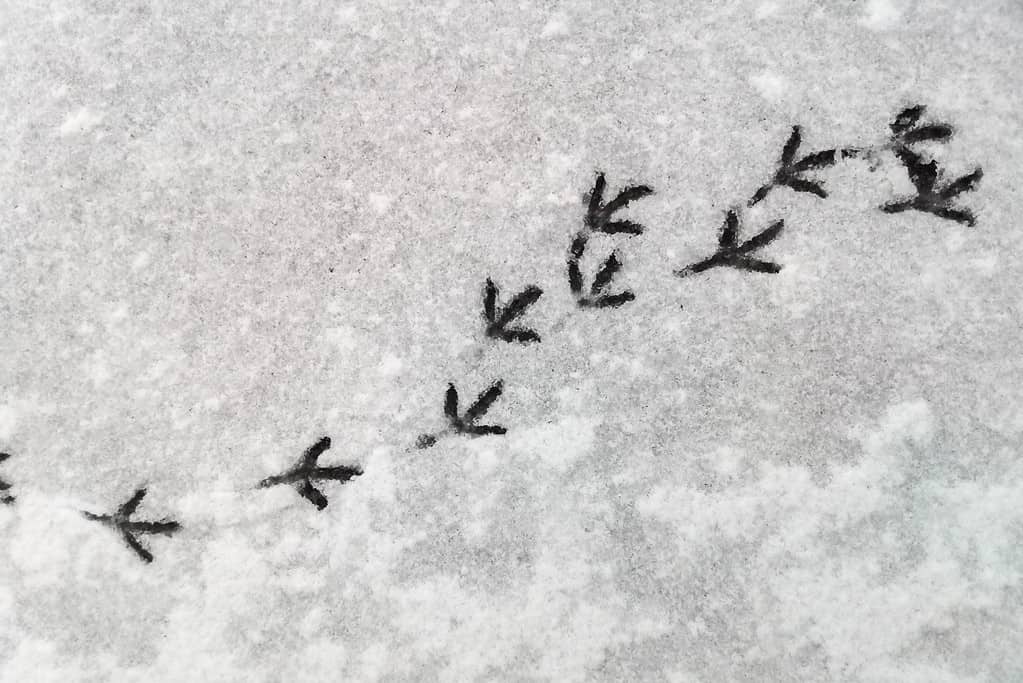A fascinating component of naturalist research, bird tracks can be seen all over. It might be overwhelming to study bird tracks because there are so many different bird species in North America. Since bird feet produce the majority of tracks you’ll see on the ground, categorizing different tracks by foot type is one of the simplest ways to do so. Anisodactyl, game bird, palmate, totipalmate, and zygodactyl are the main classifications.
So, whether you’re signing up for a bird-watching class or just curious about which flying friends are walking around your yard, this guide is designed to help you identify them. No matter if there’s rain, snow, or mud, there are plenty of ways to track birds with just the knowledge in this handy dandy guide!
Location, Location, Location!
The location of the footprints can greatly reduce the number of potential species to which they might belong. Knowing the evolutionary history of the birds in your neighborhood and their preferred habitats and range will be very helpful. Birds that like bodies of water, like ducks and herons, are unlikely to be found in an arid environment distant from water.
In the center of a coniferous forest, open country species like the western meadowlark and burrowing owl are also unlikely to be seen. Understanding the different habitats and food choices of each species can help you become a better tracker.

Birds that like bodies of water, like ducks and herons, are unlikely to be found in an arid environment distant from water.
©iStock.com/MirAgareb
Types of Bird Tracks
| Type of Track | Distinguishing Features | Example of Birds |
|---|---|---|
| Anisodactyl Tracks | Three toes are pointed forward and one is pointed backward. | Songbirds Herons Egrets Eagles Hawks Falcons Vultures Doves |
| Game Bird Tracks | In this grouping, toe one (also called the halix) may be reduced or missing. | Quail Pheasant Grouse Ptarmigan Partridge Turkey Coots Rails |
| Palmate Tracks | Birds that leave these kinds of tracks have feet with full webbing between three toes and a halix that projects backward and is unwebbed. | Green-winged teal Ducks Geese Loons |
| Totipalmate Tracks | These tracks are likewise webbed, but they have webbing between each of their four toes. Toe four is the longest toe in birds that leave this type of trace. | Pelicans Boobies Gannets Cormorants |
| Zygodactyl Tracks | Birds with two toes pointing forward and two toes pointing backward on their feet leave these tracks. | Parrots Woodpeckers Cuckoos Owls Osprey |
Tracking Birds in the Snow
Resist the impulse to enlarge each stage and instead look at the overall arrangement. It will provide you with a lot of information about the bird’s gait, or style of locomotion, and assist you in ruling out some of the typical candidates. Here are some typical methods by that birds navigate the snow.
Hopping
The bird was hopping if the tracks are placed in pairs, with each foot firmly planted next to the other. This habit is frequently observed in species that are frequently found perched in trees. Cardinals, chickadees, titmice, goldfinches, and nuthatches are a few examples.
Walking and Running
If you spot single tracks that are consistently separated from one another, you have a walker. This group typically includes grouse, gulls, ducks, mourning doves, raptors, and European starlings. While the individual traces on the trail will be further apart, running bird trails are remarkably similar.
Skipping
Hoping and skipping are quite similar, although the songs in each set will appear staggered in skipping. A lot of passerines that forage on the ground use this gait, including Song Sparrows, American Robins, Snow Buntings, and others.

The arrangement of bird tracks provides a lot of information about the bird’s gait, and will assist you in ruling out some of the typical candidates.
©iStock.com/Елена Шитикова
How to Record Your Findings
Using measures will help you further whittle down the alternatives while analyzing bird trails. Each track’s length, width, and toe length should all be recorded. If the bird is walking or running, measure the distance between each track.
If the bird was skipping or hopping, measure the space between clusters of tracks. Remember to record the location of the tracks, any birds you may have observed nearby, the types of habitats that are there, the substrate the footprints were located in, the date, the time, and the weather.
Make notes of your findings so you can refer to them in a field guide. You must take copious notes if you wish to improve your tracking abilities on a serious level. Moreover, record your observations using sketches or photos so you can revisit them in the future.
Frequently, you will get more knowledge about a collection of recordings over the course of months and even years rather than just days. You can always learn more from the tunes themselves, and every time you listen to them again, you might see them a bit differently.

Using measures will help you further whittle down the alternatives while analyzing bird trails.
©iStock.com/Lubov
Final Thoughts
Identifying bird tracks is a great way to spend time in nature and away from a screen. Now that you know a bit more about how to tell the difference between one type of bird track and another, you’re one step closer to being an expert tracker!
The photo featured at the top of this post is © iStock.com/Lyudmila Lucienne
Thank you for reading! Have some feedback for us? Contact the AZ Animals editorial team.






